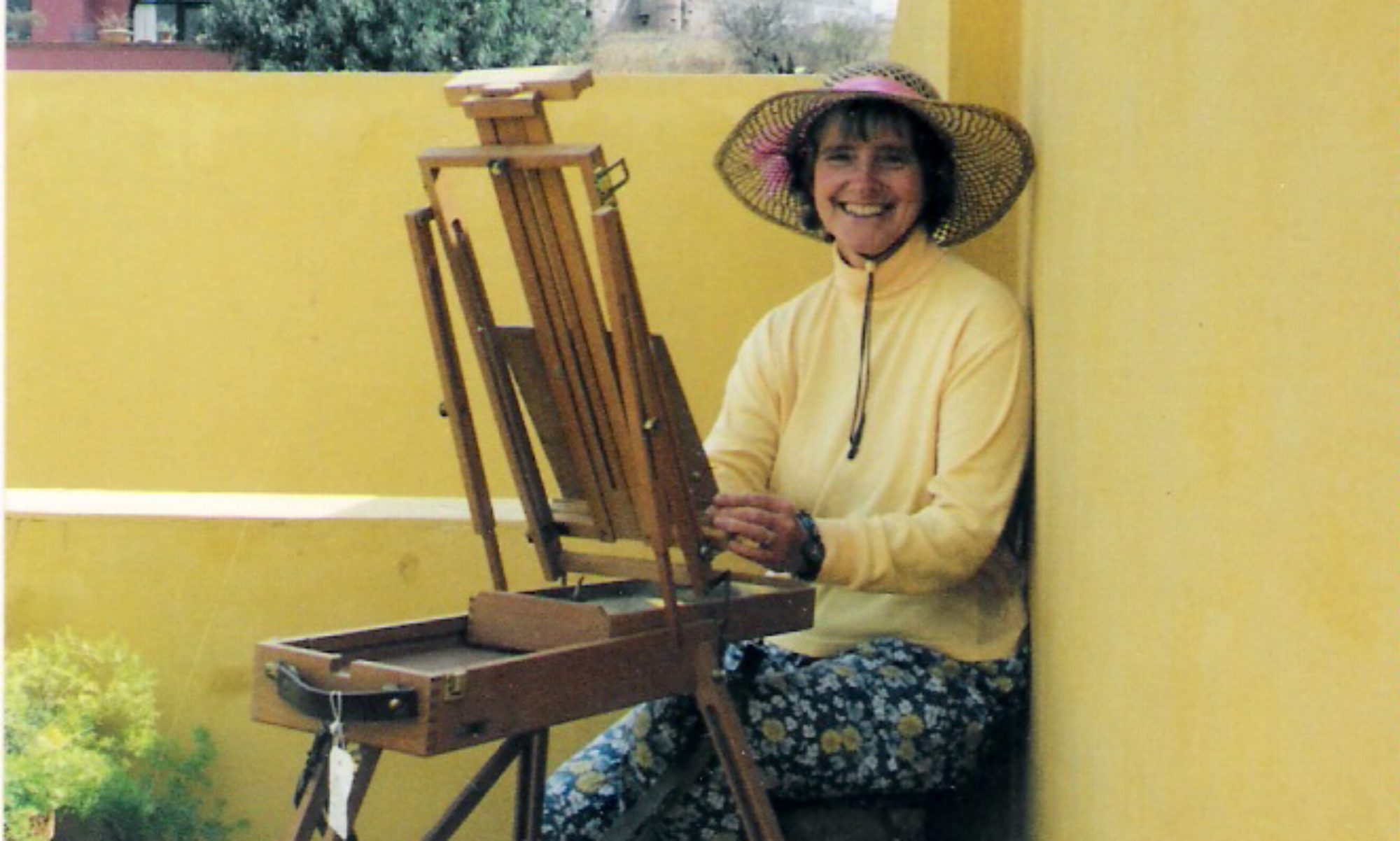Pioneer Women and Paper Patchwork was first shown at the Huronia Museum in Midland in May and June, 2013. This series of collages provides a unique window on Canadian life and celebrates the courage and achievements of thirteen women pioneers in nineteenth and early twentieth century Canada. Images on paper, some found in archives, photographs, seed catalogues, old maps, recipes, and letters are used instead of fabric to create traditional quilt patterns.
Marie- Anne Lagimodière

Letitia Hargrave

Frances Anne Hopkins

The artist, Frances Anne Hopkins, accompanied her husband on Hudson Bay company birchbark canoe trips , sketchbook in hand, to the Canadian interior. Her later paintings provide us with iconic images of the voyaguers, the Indigenous people, and the landscape. Crossed Canoes are here combined with images of rapids and pebbles.
Catharine Parr Traill

Catharine Parr Traill, who settled near Peterbrough, was a skilled amateur botanist, who wrote books about native plants and whose dried specimens, mounted on birchbark, are today in the National Archives in Ottawa. The Log cabin quilt block, here using the dark and light sides of birchbark, surrounding a warm hearth, was popular thoughout the nineteenth century.
Susanna Moodie

In 1852, writer Susanna Moodie published, with international success Roughing it in the Bush about her new life in Canada. She decribes with dismay, how, during the jounney from Cobourg to Peterborough, the sleigh carrying all their goods overturned in a snowbank, breaking her precious china. The central block is called Broken Dishes surrounded by Snowballs with a Sawtooth border..
Frances Stewart

Frances Stewart settled near Peterborough in the 1820s. Her beloved daughter Bessy died as a young child soon after her arrival. Nineteenth century cemeteries are full of memorials to lost children. The tops in the quilt pattern, Baby Blocks are such grave markers, the sides, fields of grass and wildflowers.
Anne Langton

Anne Langton travelled from England to join her brother’s family on Sturgeon Lake. Well educated and a talented artist, she found herself dealing with new challenges in the kitchen, often to do with pigs. Pigs in Clover, a nine patch, combines pigs with nineteenth century recipes, and images of clover from contemporary seed cataloqgues.
Mary O’Brien

Mary O’Brien and her husband estabished the settlement at Shanty Bay on Lake Simcoe. Her journals decribe vividly her life as a wife, mother and teacher. In one entry she tells of travelling by canoe to pick wild strawberries with her childern. A Strawberry block uses images of strawberries and 19th century seed packages, arranged diagonally,
Anna Leveridge

Travelling from England with a baby and six children, Anna Leveridge joined her husband in the mining community of Coe Hill, Hastings County. Her skill with a sewing machine helped to put food on the table for her family. Crazy quilt blocks, which could be made with tiny scraps of fabric, are here surrounded by Spool borders.
Anna Weber

As a young girl, Anna Weber immigrated from Pennsylvania to the Mennonite community of Waterloo. Unusual for a woman, she was a skilled Fraktur artist, who decorated prayerbooks and certificates with calligraphy and symmetrical German folk motifs featuring colourful flowers, animals and birds. Full Blown Tulip uses a flower very popluar in Fractur designs.
Mary Ann Shadd

Mary Ann Shadd, a teacher, and anti-slavery activist, left her home in Wilmington, Delaware, in 1850 to help the children of refugee slaves seeking freedom across the border, by opening a school in Windsor. Later, as the first black woman publisher in North America , she brought out the newspaper, The Provincial Freeman in Toronto. The traditional quilt pattern Jacob’s Ladder or the Underground Railroad here uses Log Cabin blocks for the steps on the ladder or stations on the railroad, with a flying geese border.
Nahneebahweequay Catharine Sutton

A Mississauga Ojibwe, Nahnee bahweequay , also known by her maried name as Catharine Sutton was forced to leave the Credit River and settle with her family on the shores of Owen Sound on land deeded to her by the Nawash band. Returning from a trip north, she found her land had been sold for white selltlement. When she tried to buy it back she was told that , as an “Indian” she cound not do so, Outraged, Nahnee travelled to England to plead for her rights in an audience with Queen Victoria, who received her with kindness. However her mission was unsuccessful, and her lands were not restored until, after her death, her husband as a white man, was able to buy them back. 19th Century maps showing the encroachment of white settlement on Indian Lands are used in a quilt block known as Robbing Peter to Pay Paul in a framework of corn cobs.
Mina Benson Hubbard

Mina Benson Hubbard was born in Bewdley on Rice Lake, While working as a nurse in the US, she met and later married Leonidas Hubbard. In 1903 Leonidas was part of an ill-fated expedition into the interior of Labrador where he died. Two years later, Mina, who was 25, decided to explore Labrador herself with the help of Indigenous guides. In her Old Town canoe she travelled nearly 1000 miles through Labrador to Ungava Bay, the first white woman to do so. Her accurate map of the Nascaupee and George River systems, published in 1906 by the American Geographical Society was the basis of maps of the region for decades. Crossed Canoe blocks using burchbark and green canvas are placed on a backround of Mina’s map.
Calendar

